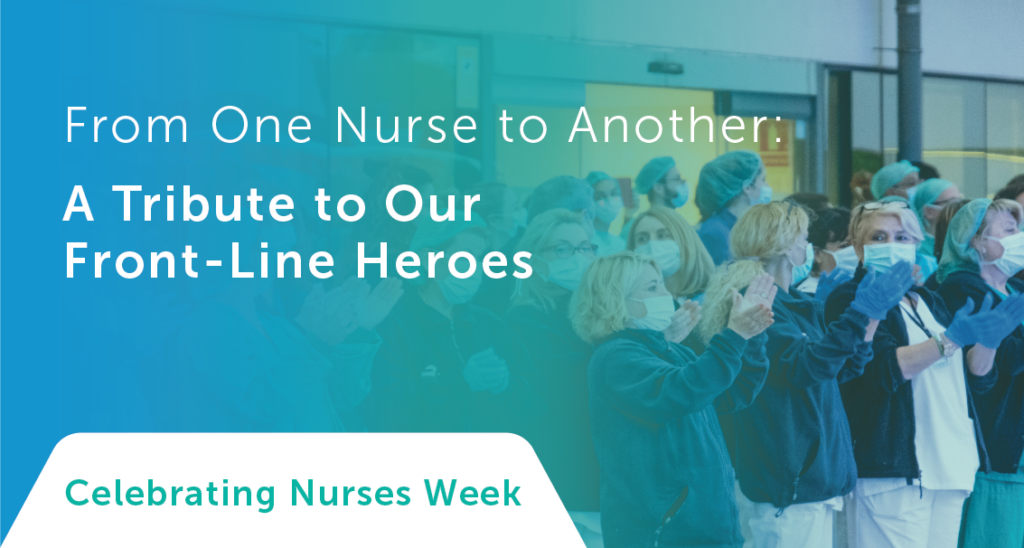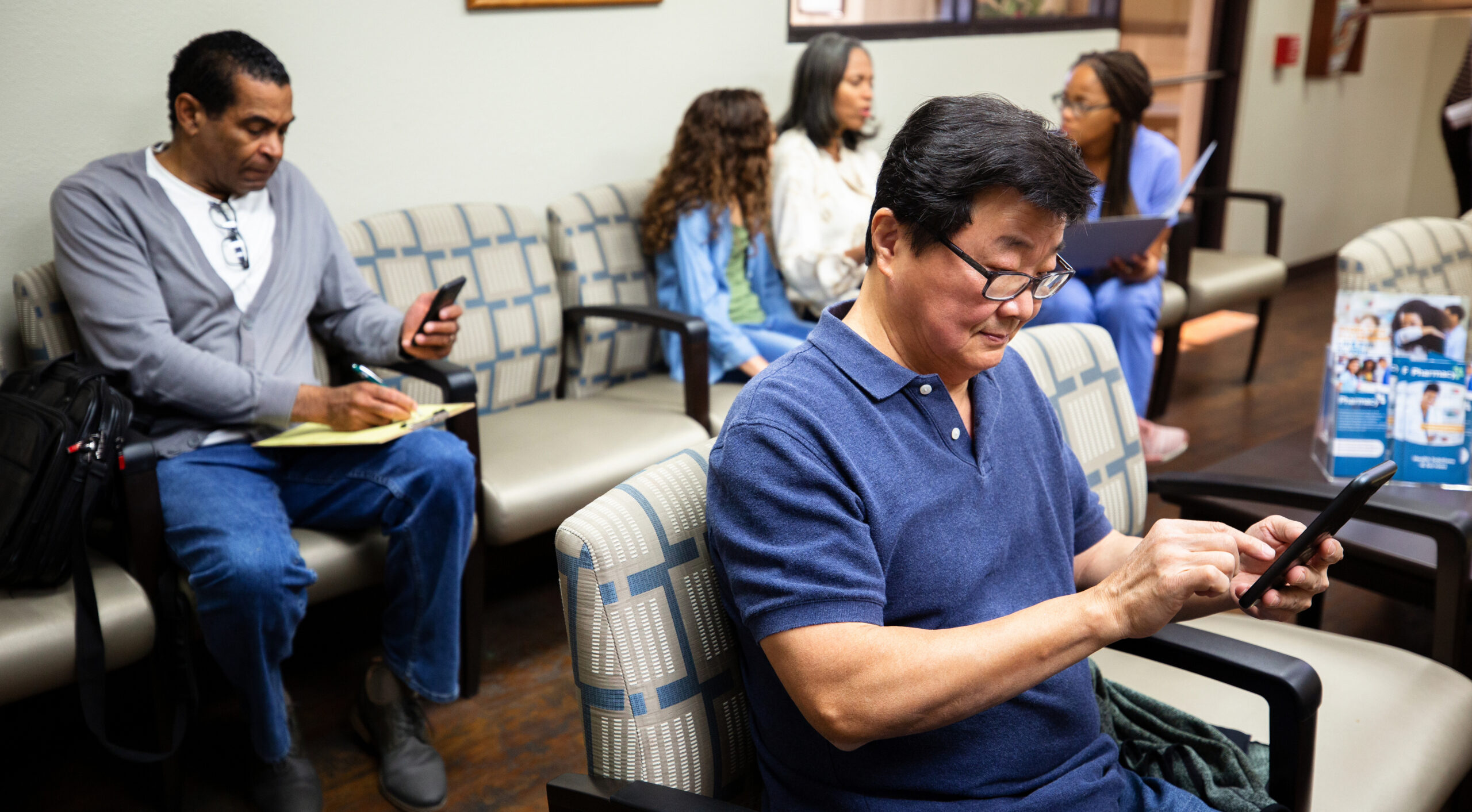To celebrate Nurses Week — and today, Florence Nightingale’s birthday — this series, “From One Nurse to Another” shares stories from our very own front-line heroes at CipherHealth. Our stellar clinical team write about what they’ve seen in the field and what their fellow nurses mean to them. Here, our Chief Nursing Officer, Lisa Romano, MSN, RN, casts a light on how the legacy established by Florence Nightingale still shines brightly for the nurses on the front line of today’s COVID-19 pandemic.
“While you are here…. While you have time…. Let us do good”
These are words inspired by Saint Francis of Assisi and paraphrased by Frank Siller, Chairman and CEO of the Tunnel to Towers Foundation, created in memory of his brother who died on 9/11 saving the lives of those trapped in the World Trade Center. Mr. Siller spoke at the Presidential Recognition Ceremony on May 1st about his organization’s establishment of the “COVID-19 Heroes Fund” to support front-line healthcare workers with meals, PPE, and potential financial relief should tragedy strike.
As I watched the ceremony and heard these heartfelt words from Mr. Siller, I thought of the many nurses on the front-lines battling COVID-19. They are here. They are making the time and they are doing so much good. Their contribution during this global pandemic is immense and their sacrifice extreme. Hospitals providing care for COVID-19 patients have quickly become a war zone. As nurses care for those affected, they fight an invisible enemy. They risk their own lives and are often isolated from their families for fear of spreading the virus. Ironically, they try to fill the void for families who cannot be at the bedside due to restricted visitation and to avoid further spread of the disease. This is a tremendous, though necessary, sacrifice both patients and families must endure.
Over the last six weeks, I have heard countless stories of nurses holding the hands of dying patients and letting them know they are not alone. I’ve seen incredible examples of workflows adapted to isolation protocols so that sick patients still have human contact and a mechanism for their voices to be heard. I’ve seen video-sharing technology used to connect patients with families as a nurse holds a device in front of a ventilated patient as they try to make sense of the visual image they’re seeing. Many of these family members last saw their loved one when they were experiencing mild symptoms and now need to reconcile the devastating reality created by the virus. They have questions. They are grieving. They may be sick themselves.
The “front line” is physically and emotionally demanding, and carries incredible health risks for each of these heroic nurses. Yet, they carry on and try to do as much good as they can despite overwhelming obstacles.
Saluting the “Lady With the Light”

Nursing history is rich with examples of heroism during times of peace and war: Florence Nightingale’s work during the Crimean War; Clara Barton’s work in the Civil War; heroic nurses in WWI, Korea, Vietnam, and the Middle East. All of them serve as inspirations to the nurses of today, who are waging war on COVID-19. Their enemy is invisible but no less a threat.
Miss Nightingale, in her signature piece Notes on Nursing, wrote, “The very first canon of nursing” is to keep the air a patient breathes as pure as possible. She took great pains to ensure the cleanliness of all utensils and equipment used for and by the patient. The significance of these precautions can’t be fully appreciated until you consider the condition of hospitals at that time.
Over a century and one-half later, hospitals have embraced the principles of a sterile environment and work diligently to provide a setting conducive to healing. COVID-19 challenges this fundamental tenet with immunologists’ worst fear — a highly infectious airborne virus with severe clinical impact and potential for overwhelming complications and morbidity.
As nurses try to take appropriate precautions with Personal Protective Equipment (PPE), they face the challenge of having enough supplies and equipment akin to wartime field hospitals. Your ability to adapt, develop creative solutions, and push your own fears away to care for the overwhelming numbers of patients in need is truly inspiring.
We Are at War
Wartime nurses report returning home from tours of duty and trying to interact with friends and family as one of the biggest challenges they faced — it was difficult for them to turn off the horrors they had witnessed and connect with their regular daily activities. Today, our front-line nurses must make that transition after each shift. These heroes are balancing child care, care of spouses, siblings, and elderly parents all while trying to take care of themselves because they know that self-care is critical if they are going to be able to continue to care for the many in need. The extended duration of this crisis makes this dynamic even more challenging. It forces each of these nurse heroes to look at their own vulnerability and find the strength to carry on.
Two of my friends enlisted in 1988 and a few years later were deployed to conflict areas in the Middle East. The strength and clinical expertise they displayed after their return was extraordinary. I had the pleasure to work with one of these nurses in the ICU. She was calm, brilliant, and never thrown off by anything a very busy ICU could throw her way. It was as if she had this body of knowledge that could not be taught but had to be experienced. I know that each of these front-line nurses today, COVID-19 Warriors, will have that same bright light and body of knowledge that will inspire the many generations of young nurses to follow.
To All the Nurses in the Battlefield
To each of the nurse heroes — thank you for your sacrifice, your bravery, and your dedication to healing and caring for those in need. This global pandemic has challenged each and every one of us to evaluate our priorities and find strength during a time of fear and uncertainty. You remind us that this is possible and give us hope during a time when hope is desperately needed. On this Nurses Day and the many that will follow, you exemplify Saint Francis of Assisi’s call to arms that Mr. Frank Siller so eloquently described.
Whether you are working in direct care of COVID-19 or caring for one of the many other patients struggling to navigate a healthcare system under siege, you are doing so much good. Our nation is saying “thank you” in creative ways, from light displays to show support for police and firefighters, to children using chalk on sidewalks to show their thanks, and from social media tributes to rounds of applause as healthcare workers enter and leave the hospitals. Sometimes just knowing your efforts are appreciated gives a boost of strength so desperately needed to endure such a difficult time.
Now more than ever, all nursing is essential. Babies are still being born, elective surgeries are resuming, trauma care, care of the elderly in nursing homes, chronic disease care, oncology… and the list goes on. Each of you assumes risk and shows your dedication as a shining light that is a beacon of hope for your patients now and all patients to come.
There are many supporting roles that make nursing care possible and their heroism does not go unnoticed. Our nurses’ aides particularly must be called out during Nurses Week for their heroism. Our physicians, respiratory therapists, case managers, infection control, lab technicians, and many other vital healthcare workers including cleaning and transport staff — we thank you.
For nurses working in supporting roles not at the bedside: coordination of care; answering questions of distressed patients and families; managing the provision of supplies and equipment; using technology to assist care delivery; patient logistics/flow; and navigating a financial landscape that is ever-changing — we thank you.
See all of the tributes from the CipherHealth clinical team in honor of Nurses Week, “From One Nurse to Another”.










